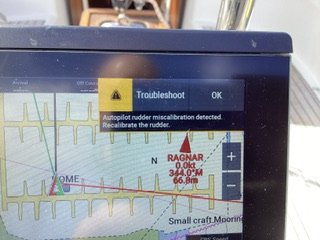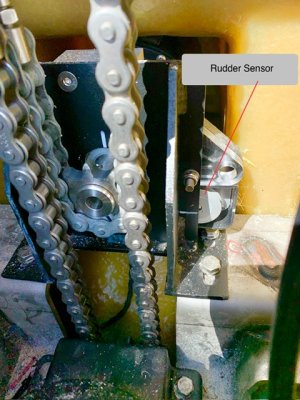Jon magowan
Member
I have upgraded all the Garmin stuff with brand new Garmin stuff (GPSMAP 723, GMI 20, Reactor 40, GHC 50). All professionally fitted and connected via an NMEA 2000 network.
The system voltage is displayed on my Chartplotter. I’ve checked it and very happy that it’s correct.
The voltage at the GMI 20 instrument is consistently exactly 1 Volt below the system voltage.
The autopilot GHC 50 flagged up a low voltage alarm briefly on my last outing.
The reactor 40 autopilot is frequently but randomly flagging up an issue with the rudder sensor calibration (troubleshooting message suggests we check the voltage at the autopilot ECU).
What on earth would account for this voltage discrepancy? The cabling has all been replaced with the cables that came with the new devices.
The system voltage is displayed on my Chartplotter. I’ve checked it and very happy that it’s correct.
The voltage at the GMI 20 instrument is consistently exactly 1 Volt below the system voltage.
The autopilot GHC 50 flagged up a low voltage alarm briefly on my last outing.
The reactor 40 autopilot is frequently but randomly flagging up an issue with the rudder sensor calibration (troubleshooting message suggests we check the voltage at the autopilot ECU).
What on earth would account for this voltage discrepancy? The cabling has all been replaced with the cables that came with the new devices.



